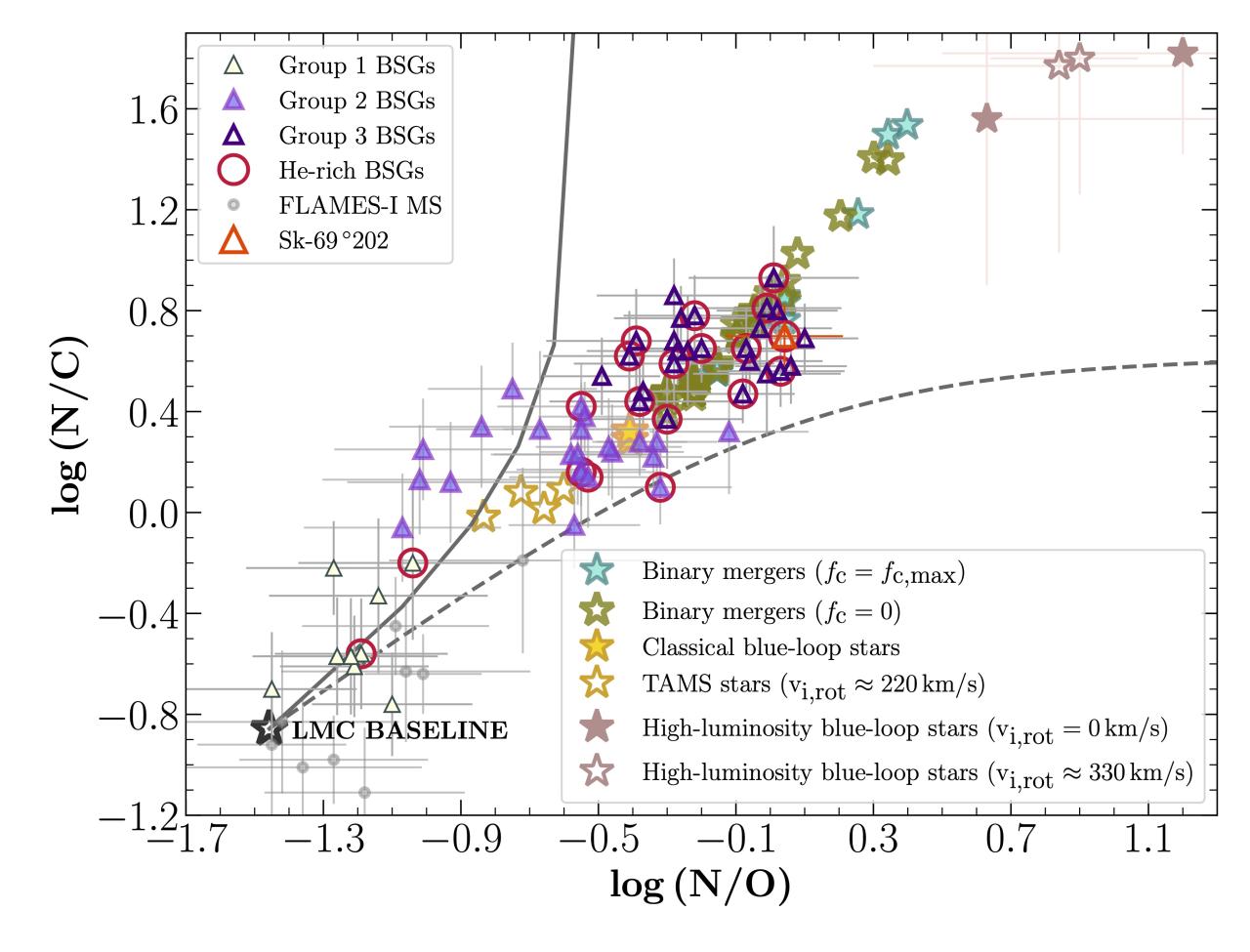Chemical abundance ratios of Nitrogen to Carbon (N/C) and Nitrogen to Oxygen (N/O) for blue supergiant models (filled and open star icons) and observed blue supergiants (triangles). Yellow and brown star icons represent born-alone stellar models while green star icons represent stellar-merger models. Main-sequence stars are also marked (grey dots).
Massive stars, those over ten times heavier than our Sun, are the conduits of most elements of the periodic table and drive the morphological and chemical makeup of their host galaxies. Yet the origin of the most luminous and hottest stars among them, called 'blue supergiants', has been debated for many decades.
Blue supergiants are strange stars. First, they are observed in large numbers, despite conventional stellar physics expecting them to live only briefly. Second, they are typically found alone, despite most massive stars being born with companions. Third, the majority of them harbour unusually large amounts of nitrogen compared to carbon and oxygen, and sometimes even helium.
In this work, new models of stars born from the mergers of binary systems, where a massive star engulfs its smaller companion, were developed, and models of stars born alone were examined. Simultaneously, it was also analysed a large sample of 59 B-type blue supergiants in the Large Magellanic Cloud and derived their physical parameters and chemical abundances.
Unlike stars born alone, stars born from stellar mergers were found to evolve and remain as blue supergiants throughout their core helium-burning lifetime, which is the second-longest phase of a star’s life. Together with the chemical abundances and accounting for systematic offsets in their sample, this work dissected the evolutionary origins of blue supergiants as follows: the majority are made from stellar mergers (group 3), a smaller mixed population contains merger-born and born-alone stars (group 2), and a minority faction is made up of born-alone stars still on the main sequence (group 1).
For the first time, there is a definitive, quantitative solution to one of the oldest problems in stellar physics. The findings of this research also indicate the invaluable contributions of stellar mergers to the diversity of stellar populations, supernovae and their final remnants as black holes and neutron stars.



